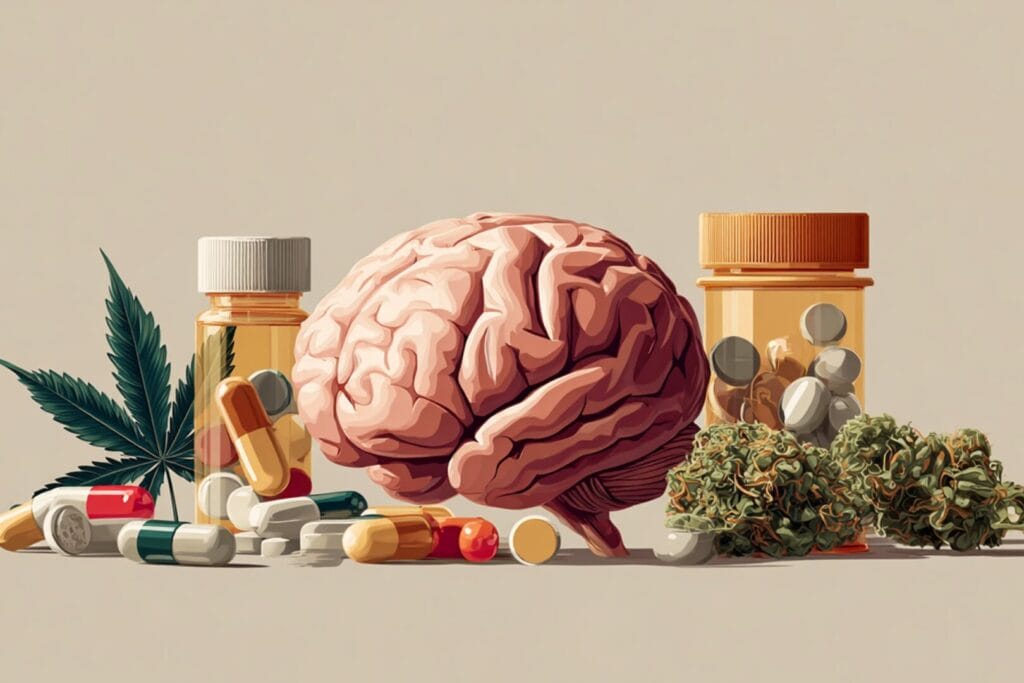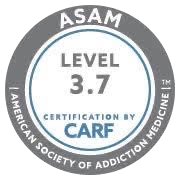What Is Opioid Dependence?
The past decades have seen incredible progress in treating opioid dependence and addiction. As the academic communities have gravitated toward treating addiction with the medical model, several opioid dependence drugs and opioid use disorder therapies have been developed.
Opioid dependence is characterized by tolerance and withdrawal. In other words, the body adapts to the substance, needing more to achieve the same effects and experiencing mental or physical symptoms without it.
What Is the Difference Between Opioid Dependence and Opioid Addiction?
Opioid dependence and opioid addiction are both terms that describe opioid abuse; however, dependence emphasizes the physical symptoms of a substance use disorder rather than the cognitive and social symptoms. Opioid addiction refers to the physical, mental, and social effects that impact a person due to drug abuse.
Why People Become Addicted to Opioids
Reports show that 10.1 million people in America aged twelve and older misused opioids in 2019. More specifically, 9.7 million misused prescription pain relievers and 745,000 used heroin. It is clear that prescription pain medication is responsible for the majority of opioid addiction cases.1
There are countless reasons opioid dependence occurs, but a few patterns and factors are more common and notable than others. These causes of opioid addiction include:
- Using opioids to cope with mental illness
- Taking large amounts of painkillers to deal with pain
- Using opioids to cover emotional pain, such as trauma or grief
- Using opioids to enhance other sensations
- Tolerance
- Escapism
During the early stages of opioid dependence, drugs can seem like a universal palliative for many people. They produce feelings of pleasure and euphoria, relieve worries, and dampen pain. Regardless, after repeated use, opioid addiction will bring more negative consequences than any fleeting positives.
Signs and Symptoms of Opioid Dependence
The signs and symptoms of opioid dependence fall into several categories, including behavioral, physical, cognitive, and psychosocial. The following indicates opioid addiction treatment may be necessary.
Behavioral Symptoms
The behavioral symptoms of opioid dependence include:
- Constantly seeking out opioids
- Neglecting other hobbies or activities in favor of opioid misuse
- Spending an excessive amount of time using, recovering from, or looking for opioids
- Borrowing money
- Sleeping all the time, or falling asleep while standing or sitting
- In opioid addiction treatment, there are specific therapies designed to change these behavioral patterns.
Physical Symptoms
The physical symptoms of opioid dependence and withdrawal symptoms include:
- Sneezing
- Restlessness
- Fever
- Chills
- Sweats
- Shakes
- Nausea
- Diarrhea
- Tolerance
- Track marks along arms if taken intravenously
- Weight loss
The physical symptoms of opioid use disorder can be treated with various therapies.
Cognitive Symptoms
The cognitive symptoms of opioid dependence include:
- Restlessness
- Anxiety
- Depression
- Persistent cravings for opioids
- Denial that a problem is present
Evidence-based treatments address the cognitive symptoms and mental health issues caused by long-term opioid addiction.
Psychosocial Symptoms
Lastly, the psychosocial symptoms of an opioid use disorder refer to the damage this condition can cause to social aspects of life. They include:
- Loss of a job or occupation
- Strained relationships with friends and family members
- Housing instability
- Legal consequences
At an opioid addiction treatment center, counselors and therapists are trained to help people deal with these psychosocial symptoms.
Medical Treatments or Opioid Dependence
Drugs to treat opioid addiction come in several varieties. These are some of the most effective opioid addiction treatment options and have helped millions of people to recover. The three main medications used as opioid addiction treatment medications are:
- Buprenorphine
- Methadone
- Naltrexone
Buprenorphine
Buprenorphine is an opioid partial agonist, meaning it binds to opioid receptors in the brain and mildly activates them. As a result, this medication produces lessened effects of opioids (e.g., euphoria), working as a replacement for harsh drugs like heroin to help treat addiction to opioids. In addition, buprenorphine has a ceiling effect (the effects are capped at a certain amount), preventing abuse and overdose.
Research shows that buprenorphine resolves withdrawal symptoms more quickly and has better retention and completion rates compared to other opioid treatment medications.2
Methadone
Methadone is a long-acting full opioid agonist, so its effects are similar to buprenorphine, but it fully activates the opioid receptors in the brain. Thus, methadone provides the full effects that other opioids do and does not have a cap (i.e., effects increase as the dose increases).
Nonetheless, this medication effectively reduces opioid craving, lessens withdrawal symptoms, and blocks the effects of opioids. Studies found that methadone treatment was associated with a 76% reduction in overdose at three months and a 59% reduction at twelve months.3
Naltrexone
Unlike buprenorphine and methadone, naltrexone is an opioid antagonist, meaning it reverses and blocks the effects of other opioids, preventing the effects of opioid drugs and reducing abuse.
Multiple clinical trials studying the efficacy of naltrexone found that it reduced heroin cravings, and between 23% and 62% of participants remained in treatment after three to four weeks. In addition, two studies reported that 32% to 58% of participants who continued treatment maintained sobriety six to twelve months after their naltrexone treatment ended.4
Getting Help for Opioid Dependence at San Diego Detox
If you or a loved one is struggling with opioid dependence, San Diego Detox is an excellent solution for opioid addiction treatment and recovery. We use various techniques to help people overcome their difficulties, including opioid addiction treatment medications, opioid overdose supportive therapy, and psychological treatments.
Therapeutic drugs to treat opioid addiction are delivered on a case-by-case basis to ensure that each client receives the treatment that works best for them.
We understand the severity and difficulties of opioid addiction, which is why our highly qualified team provides the compassion and support needed to achieve a healthy recovery. Contact us today at San Diego Detox to learn more about our treatment programs.
How to Diagnose Opioid Dependence
Diagnosing an opioid use disorder has to be performed by a licensed clinician. When clients start treatment at an opioid addiction treatment center, clinicians will typically ask several questions regarding their addiction, look over medical records, and determine whether they meet the criteria for opioid dependence.
Receiving this diagnosis can help determine the next steps for opioid treatment.
Psychological Treatments for Opioid Dependence
Psychotherapy, also called talk therapy, is an effective tool for managing opioid use disorder.
The best evidence-based treatment2 for opioid use disorder is to use a variety of psychological treatments alongside medication, but determining which treatment plan is right for you is between you, your physician, and your therapist.
Talk therapies for opioid use disorder include:
- Motivational interviewing and motivational enhancement therapy
- Cognitive behavioral therapy (CBT)
- Family therapy
- Couples counseling
- Hypnotherapy
- Neurotherapy
- 12-Steps programs
Opioid use disorder therapies have several targets, but in general, they aim to teach healthier coping mechanisms, reduce drug cravings, and reverse opioids’ effect on the brain.
Resources
https://www.niaaa.nih.gov/alcohols-effects-health/overview-alcohol-consumption/what-standard-drink
https://www.drugfreeworld.org/drugfacts/alcohol/short-term-long-term-effects.html
https://www.ncbi.nlm.nih.gov/pmc/articles/PMC2913110/
https://www.webmd.com/mental-health/addiction/understanding-alcohol-abuse-symptoms






